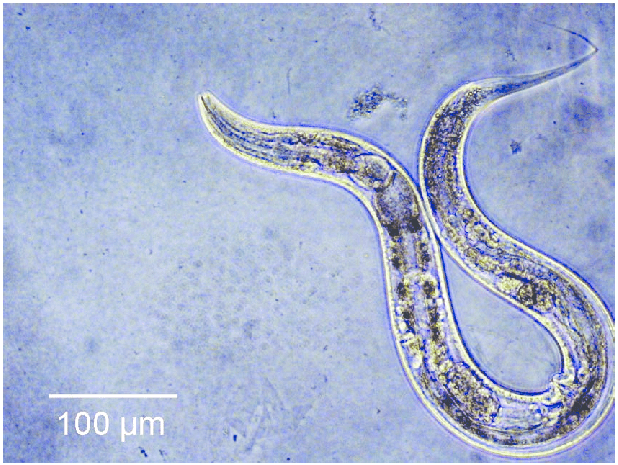C. elegans, a nematode worm, is one of the most widely used model organisms in labs across the world. It’s often the animal of choice when studying longevity because of its relatively short lifespan of only three to four weeks, which allows scientists to quickly discern the effects of genetics and the environment. Now, an international team of researchers claims they have tweaked the worm’s genes, extending its lifespan by up to 500%.

The team, which includes scientists affiliated with the Buck Institute for Research on Aging in Novato, Calif., and Nanjing University in China, focused on two major pathways: the insulin signaling (IIS) and TOR pathways. These pathways are “conserved”, meaning they’ve been passed down by a common ancestor to both worms and humans.
Researchers mutated both pathways, expecting a 100% increase in lifespan due to the mutated ISS pathways and a 30% increase from the TOR pathway. Instead, they noticed that their altered worms lived up to 500% longer (4-5 months versus 3-4 weeks) than they normally would.

“The synergistic extension is really wild,” said Jared Rollins of Nanjing University, who is one of the lead authors of the new study, which was published in Cell Reports. “The effect isn’t one plus one equals two, it’s one plus one equals five. Our findings demonstrate that nothing in nature exists in a vacuum; in order to develop the most effective anti-aging treatments we have to look at longevity networks rather than individual pathways.”
This synergistic interaction could pave the way for novel therapies designed to extend the human lifespan similarly to how some combination therapies treat cancer presently.
“Despite the discovery in C. elegans of cellular pathways that govern aging, it hasn’t been clear how these pathways interact,” said Hermann Haller, M.D., president of the Mount Desert Island Biological Laboratory. “By helping to characterize these interactions, our scientists are paving the way for much-needed therapies to increase healthy lifespan for a rapidly aging population.”
These findings may also explain why scientists have been unable to put their finger on a single gene, or even a collection of genes, that allows some people to reach extraordinary old ages free of major illnesses.
In the future, Rollins and colleagues want to focus their research on how longevity is regulated by mitochondria, the organelles responsible for supplying cells with energy. Previously, studies have suggested that poor mitochondria function is associated with aging.
Was this helpful?



